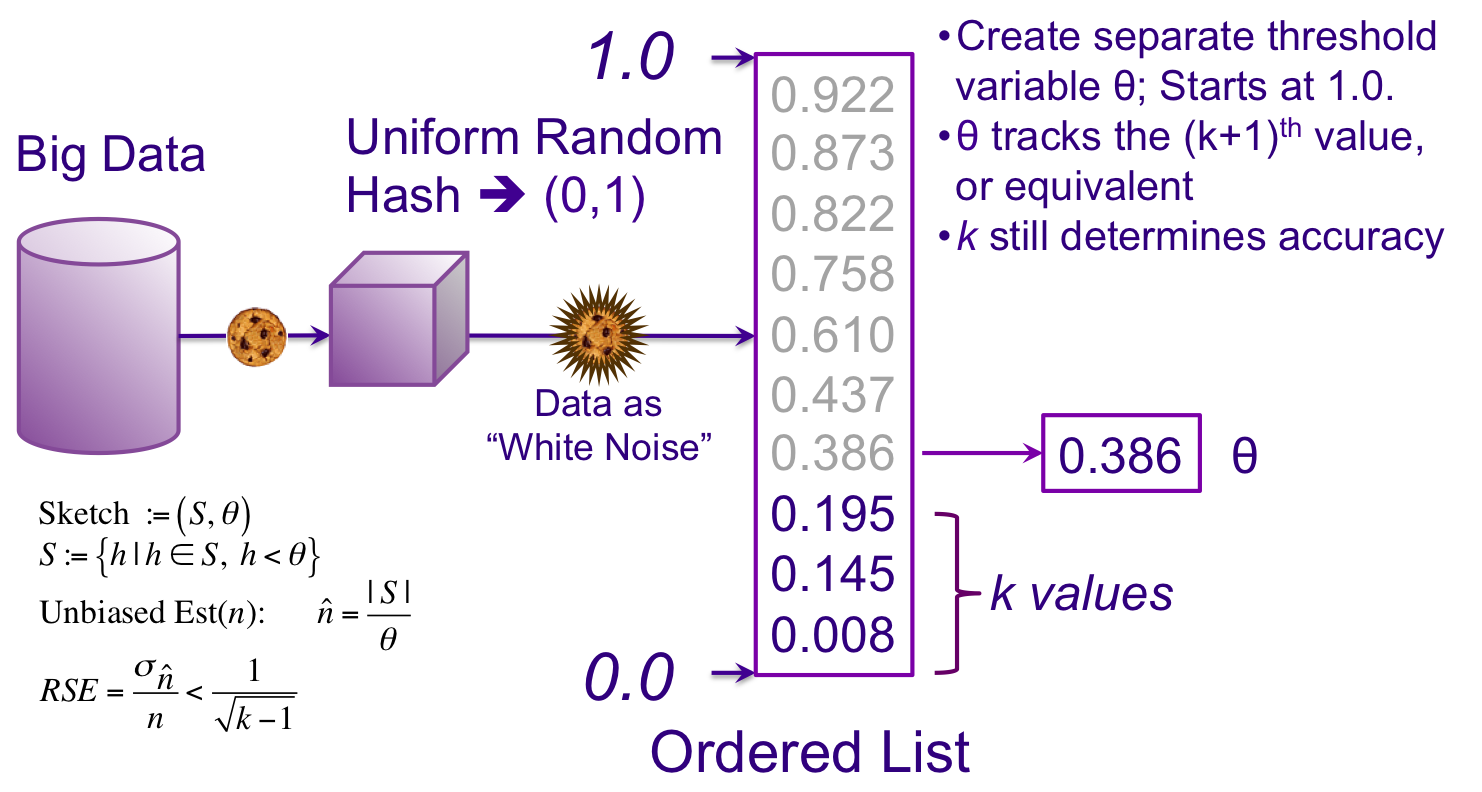Theta Sketches are a generalization of the well known Kth Minimum Value (KMV)1,2 sketches in that KMV sketches are a form of Theta Sketch, but not all Theta Sketches are KMV.
The Theta Sketch Framework (TSF) is a mathematical framework defined in a multi-stream setting that enables set expressions over these streams and encompasses many different sketching algorithms. A rudimentary introduction to the mathematics of the simpler sketch algorithms is developed in the Theta Sketch Equations document.
The TSF consists of the following components:
The TSF enables this sketch library to encompass multiple sketching algorithms including the KMV sketch with a common API and greatly simplifies implementation of set expressions.
Note that in the KMV sketch the value k is overloaded with multiple roles:
By unloading some of these roles, we will gain degrees of freedom to do some innovative things.
Instead of having to track V(kth), which is a member of the list of hash values, we are going to create a separate threshold variable and call it theta (θ). This effectively decouples #3 and #4 above from k. When the sketch is empty θ = 1.0. After the sketch has filled with k minimum values θ is still 1.0. When the next incoming unique value must be inserted into the sketch the (k+1)th minimum value, is assigned to θ and removed from the cache.3
Ultimately, it will be the size of S, |S|, that will determine the stored size of a sketch, which decouples #2 above from the value k. The Nominal Entries or k is a user specified, configuration parameter, which is used by the software to determine the target accuracy of the sketch and the maximum size of the sketch.
The unbiased estimate simplifies to |S|/θ, which is just the size of S divided by θ. We will discuss the RSE in a later section.

[1] Z. Bar-Yossef, T. Jayram, R. Kumar, D. Sivakumar, and L. Trevisan. Counting distinct elements in a data stream. In Randomization and Approximation Techniques in Computer Science, pages 1–10. Springer, 2002.
[2] See KMV Tutorial and Sketch of the Day: K-Minimum Values for a brief tutorials on KMV Sketches.
[3] This is a limited “KMV perspective” on how θ gets assigned. The attached paper Theta Sketch Framework presents multiple ways that θ can be assigned using the Theta Choosing Function (TCF). Different sketch algorithms have different TCFs.